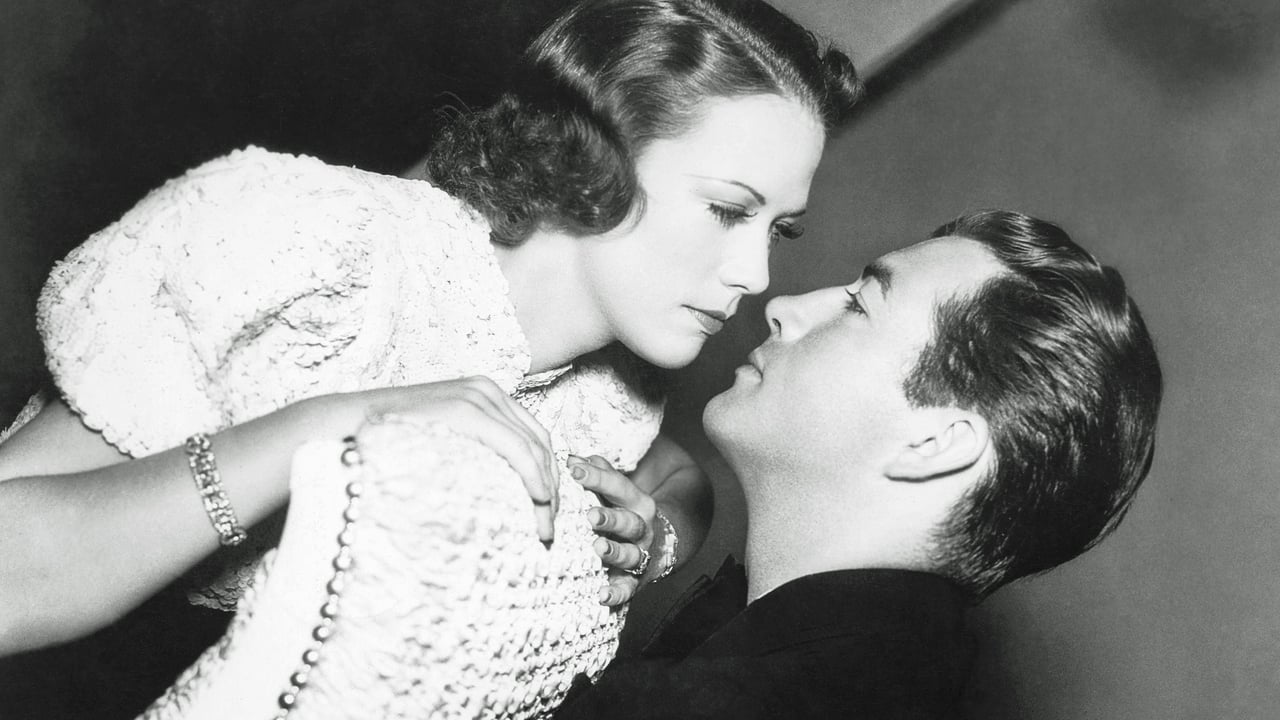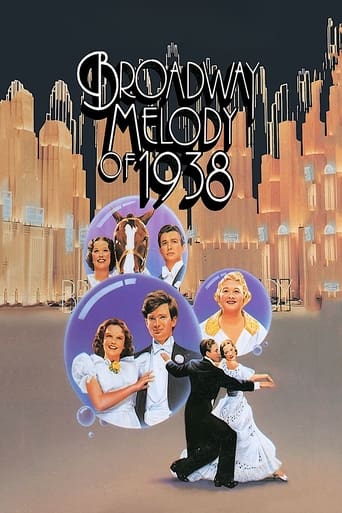Marketic
It's no definitive masterpiece but it's damn close.
GetPapa
Far from Perfect, Far from Terrible
Spidersecu
Don't Believe the Hype
filippaberry84
I think this is a new genre that they're all sort of working their way through it and haven't got all the kinks worked out yet but it's a genre that works for me.
jacobs-greenwood
With some of the same actors, the director and writers from the similarly titled edition two years earlier, this third of the four MGM musicals featuring the title song lacks the charm and originality of its predecessor.However, it makes up for it historically because it contains Judy Garland's first appearance in a full length film. Garland sings "You Made Me Love You (I Didn't Want to Do It)" to a picture of Clark Gable (among other things).Director Roy Del Ruth, writers Jack McGowan and Sid Silvers, actors Robert Taylor, Eleanor Powell and Buddy Ebsen are joined by George Murphy, Binnie Barnes, Sophie Tucker, Raymond Walburn, Robert Benchley, Charley Grapewin and Billy Gilbert (among others).Robert Wildhack's monologue about sneezes is too long and tiresome in this one and the whole racehorse back story is uninvolving and predictable.After being billed third behind headliner Jack Benny and Powell in the 1936 movie, Taylor's name jumped to the top following his turn opposite Greta Garbo in Camille (1936). Again, he plays a young show producer; this time he wants it star an unknown hoofer (Powell) until his financial backer's (Walburn) wife (Barnes) interferes for jealous spite.Murphy and Ebsen play out-of-work performers who befriend Powell's character; Tucker plays Garland's stage mother, a former star herself. Benchley is Taylor's agent, Grapewin a horse trainer, and Gilbert a barber-come-investor in Powell's horse.
atlasmb
"Broadway Melody of 1938" feels like the real start to Judy Garland's film career. After it was made, she was very busy cranking them out for MGM. In this film, she is still being portrayed as the child performer, dressed in ankle socks and Buster Brown outfits. She was approximately age 15 during the production of this film and they were fighting her budding bustline, but she was still viewed as the cute young girl who could swing and scat. She is only seventh billed for this film, however, with plenty of talent headlining.Personally, I love B&W films where the images are crisp, with clear contrast. "BM38" is delightfully clean.I noted right away that the director intended to use the camera in creative ways. In the opening shot, the camera tracks down a marquee, crosses the street (Broadway?) and moves down the sidewalk to a sign. I don't want such camera work to detract from the action, but if it adds to the spectacle or adds emotional impact, it is welcome. Note the dance scene that takes place in a railroad car. The camera frames the dance in various ways, adding action to the performance.The story itself is about the machinations behind the scenes of a Broadway revue--the raising of funds, the casting, the political concerns. The cast is talented and energetic. The songs and dances are very entertaining.There is one part they could have left out--a specialty act in which a guy ruminates on the types of sneezes. Sometimes studios find it difficult to leave out the kitchen sink, even when it brings the action to a complete halt. But if you can overlook this one distraction, "BM38" is well worth viewing.
CitizenCaine
MGM's Broadway Melody of 1938 was actually made in 1937. It is now famous as the young Judy Garland's MGM debut feature film. In it, she sings her ode to Clark Gable's photograph, "Dear Mr. Gable". The words were added especially for her to the standard, "You Made Me Love You." However, Judy only has a small role in the film, playing the daughter of old Broadway stalwart Sophie Tucker. Sophie Tucker runs a performer boarding house where Eleanor Powell eventually finds herself. She plays a young lady, who pines for a horse that she helped raise. Robert Taylor is a producer trying to get funding for his show, etc. They meet, fall in love, and along the way we're treated to a melange of depression era nostalgia in the form of comedy, laughter, song and dance, and typical 1930's hokey plot points. Besides Garland's songs, including "Everybody Sing", the musical highlights are the tap dancing of Buddy Ebsen, George Murphy, and Powell to "Follow In My Footsteps" and Murphy and Powell dancing to "I'm Feelin' Like A Million". Director Roy Del Ruth, who did a number of these type of films in the 1930's, keeps things moving at a brisk pace and we're swept away. Well-timed humor is provided by Binnie Barnes, Raymond Walburn, and Billy Gilbert. The always welcome Robert Benchley even turns up in a small bit. However, the songs are not that memorable, and the film has a typically overproduced MGM finale, bigger than the film itself. **1/2 of 4 stars.
jenabaum
After finding success with the two previous "Broadway Melodies", MGM must have realized they had something.... However, this third installment is not the best, although there are some fun performances from Eleanor Powell, Sophie Tucker and Judy Garland.Eleanor's finale is something to see, as is the sweet song "Dear Mr. Gable (You Made Me Love You)" that Judy sings as a love letter to Clark's portrait.

